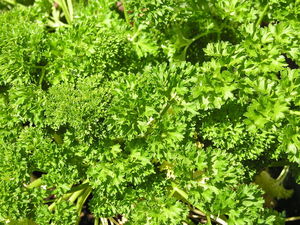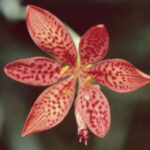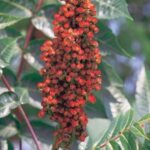The Chinese Pistachio Tree (Pistacia chinensis) is native to China and East Asia and is a member of the Anacardiaceae (sumac) family. The tree is related to the cashew, the Elephant Tree, South American Pepper Tree, Poison Zumac and Mango.
The tree is hardy in USDA zones 7 through 9, but there is more to take into consideration than the zones when picking a plant. Not all plants can stand up to the pollution, tightly-compacted soils and other unique problems faced by a gardener in the city. The Chinese Pistachio Tree is at home in a urban environment. The tree is drought resistant and a small to medium size, making it a good choice for a city.
The Chinese pistachio tree will be either male of female. One of each is necessary for seed production. It is a deciduous tree that grows from 25 to 40 feet tall and has a spread of from 25 to 35 feet. The tree produces 8-inch long green leaves that turn red, yellow or orange in the fall, small green flowers that grow in loose 8-inch long clusters at the ends of the branches and red fruit, but only on the female trees.
The Chinese pistachio tree needs full sun and a soil that is moist and well drained. The tree is very adaptable when it comes to the type of soil . In its native habitat, it is found growing in the rocky soils of the hills and mountain forests.
The wood of the Chinese pistachio tree is used to make furniture. The seeds are roasted and then eaten. The tree is widely used in Chinese garden designs. China uses the oil from the seeds in the production of bio-diesel. This is not the commercially marketed pistachio nut, however, that tree is grown by grafting its stems onto the roots of the Chinese Pistachio Tree.
Verticillium wilt and oak root fungus occasionally affect Chinese Pistachio. Verticillium wilt is a fungus that lives in the soil and attacks many woody ornamental trees. The leaves of the tree will be small and yellow with a brown edging. Oak root fungus develops when the soil around the tree is allowed to get too moist. It can be fatal but other trees are more vulnerable than the Chinese pistachio tree. There is no early sign. A tree that looks healthy, can wilt and die in just a few weeks. Prevention is the best cure for fungus infections. Fungi thrive in a moist environment. Keeping moisture off the leaves and planting so there is good air circulation can help prevent the infection from striking. Fungicides will not help with either disease.
The tree is not for everyone. It does have a limited growing area, but gardeners within its range who what to have an unusual tree that will get people’s attention should take the Chinese Pistachio Tree into consideration.
Sources:
North Carolina State University: Pistacia chinensis
University of Florida: Pistacia chinensis
Forest Service: Pistacia chinensis





